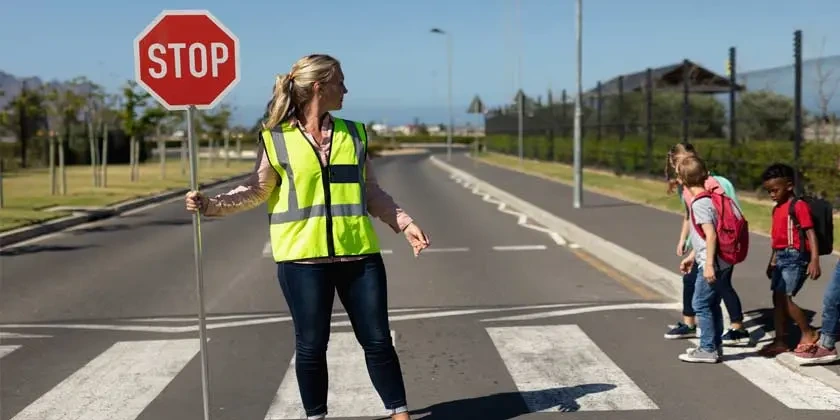It is your responsibility to stop at the school crossings. This does not only mean that you have a legal duty but also that it’s a way of showing your concern for the children.
When approaching school crossings, drivers must be vigilant and adhere to all traffic laws.
What makes stopping at school crossings a responsibility?
This action is more than a brief pause; it’s a commitment by all drivers to put the safety of children who cross these intersections every day first. Stopping at a crossing represents a driver’s responsibility and awareness of the rules in place to protect the children who are the most vulnerable.
The imperative to stop when approaching a school crosswalk is grounded in the convergence of legal and ethical obligations and the goal of protecting students. Drivers are required to stop completely when they come across a school crosswalk and give way to any pedestrians who may be crossing the street. The directive does not just suggest something but is a vital part of the traffic law that aims to protect children crossing the road and prevent any accidents.
This practice is even more important at certain times of day when the foot traffic in the vicinity of schools is high, like the start and finish of school days. The drivers are expected not only to follow the law but to also exercise extra caution to anticipate children near school zones. Stopping at a crossing for a school is a response to the current situation, in which awareness of your surroundings is essential. Proactive measures to avoid potential dangers are also necessary.
It is not just legal to stop at a crossing for school. This is also a sign of the community’s values and commitment to creating a safe place for children. The surrounding area should reflect these values by placing safety first. Schools are hubs for learning, community involvement, and growth. The drivers who adhere conscientiously to the school crossing requirement contribute to creating a safe environment for the children. They promote a culture in which their school journeys are protected from unnecessary risk.

The act of stopping at a school crossing is a sign that we all share a social responsibility. This gesture acknowledges children’s vulnerability and the fact that they depend on adults to be conscientious. Drivers are essentially taking on the role of guardian when they stop at school crossings, as they recognize the possible consequences of failing to do so. Stopping at a school crossing allows drivers to actively contribute to creating a safe space for children. This fosters a collective sense of responsibility toward the safety of our youngest community members.
Stopping at a crossing for school children is not only ethical and legal but also an effective educational tool. This teaches children valuable lessons about road safety and instills in them an understanding of the need for extra caution in certain places. It is a good example to see responsible drivers at school crossings. This reinforces the importance of obeying traffic laws. The experience-based learning helps to develop responsible, safety-conscious adults who can carry the lessons they learn into adulthood.
Stopping at school crossings is also in line with wider efforts to promote a culture that respects pedestrians, and prioritises their safety when urban planning. Cities and communities recognize the importance of protective measures for children in places where they congregate by designating crossings for schools and implementing rules that require pedestrians to stop. The approach goes beyond the traffic laws to the deliberate shaping of the urban environment that encourages the coexistence between vehicular and pedestrian traffic, particularly in areas closely associated with educational institutions.
Local authorities, in addition to the individual’s responsibility, play an important role in making sure that drivers stop at school crossings. Signage, crosswalks, and speed limits that are appropriate for the environment help drivers recognize when they need to stop. Urban planning should also take into account factors like the proximity of pedestrian paths and traffic signals to school crossings.
The technology has also evolved to improve the stopping practice at school crossings. Incorporating flashing lights and pedestrian-activated signal systems, as well as speed detection devices near schools, are technological enhancements of the law. This technology helps to create a foolproof safety net by alerting drivers to school crossings and encouraging them to comply with stopping requirements. The human element is complemented by technological interventions, which act as extra layers of safety to reinforce the school zone’s security.
Conclusion
Stopping at a crossing for school is more than just a traffic law. It’s a sign of society’s concern about the well-being and education of their youngest citizens. The impact of this simple but powerful action is felt in the legal, social, and educational dimensions. It creates a harmony between safe driving and protecting vulnerable pedestrians. Stopping at crossings for school children helps to build safer communities where kids can cross the road with more confidence. Stopping at a crossing represents more than a brief pause. It is a pledge made collectively to protect the travels of future generations.
